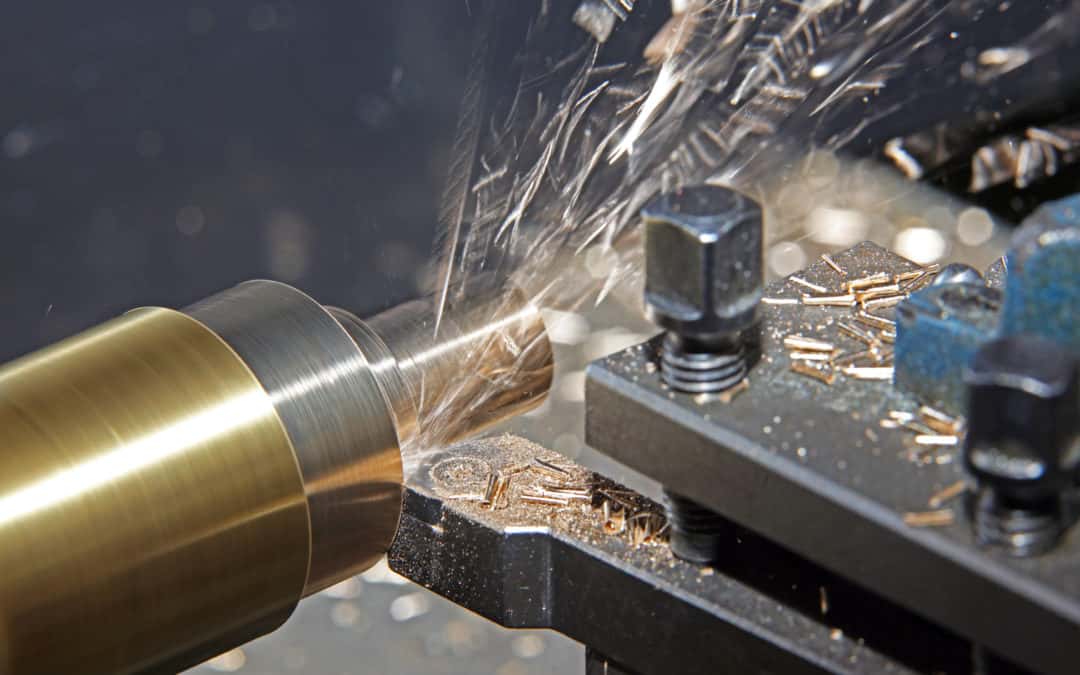Free-cutting brass offers a machinability value of 100, the highest possible rating, making it a benchmark among metals. It machines easily and efficiently, generates good finishes, causes minimal tool wear, and cuts quickly and at high speeds. Compared to other materials, including common steel and stainless steel alloys such as 12L14 and 304L, brass offers significantly higher throughput potential, which translates to greater profits.
This profitability upside is linked directly to the fact that brass lends itself to high-speed machining at metal removal rates far beyond those of other metals, depending on the alloy and the task.
A recent production-oriented analysis validated those performance characteristics emphatically. When Ohio-based machinability experts TechSolve evaluated five brass alloys versus 12L14 steel and 304L stainless steel, they conducted turning and drilling tests that relate to the everyday production realities that face many shops. The question TechSolve sought to answer was simple: How fast could carbide cutting tools turn and drill each metal for practical production periods while maintaining acceptable workpiece finish, tool life and chip formation?
This question holds high importance, especially because many shops consistently underestimate the machinability of brass by up to 85%. TechSolve’s tests showed that although all of these metals could achieve speeds and feeds higher than traditional handbook values, brass consistently outperformed steel and stainless.
For example, turning brass at speeds above 3,000 surface feet per minute (SFM), even for four continuous hours, produced minimal tool wear. In fact, the carbide inserts remained within the break-in period after the four hours ended. Compared to a turning test performed at a conventional speed of 500 SFM, high-speed turning removed the same amount of material six times faster with identical tool wear.
The turning tests went still further, pushing brass all the way to 4,000 SFM without excessive spindle vibration or chatter. Ultimately, the limiting factor for turning speeds on brass was the available spindle RPM of the machine tool. By contrast, 12L14 steel peaked at 1,200 SFM, 30% of the performance of brass, and 304L stainless steel managed only 800 SFM, 20% of what brass could do. Importantly, both steels could maintain those speeds for only 30 minutes of tool life.
In drilling tests, brass powered through 1,000 1.5″-deep holes at 2,000 SFM with acceptable tool wear and excellent chip control. For 12L14 steel, the fastest drilling speed to complete the minimum of 1,000 holes was only 800 SFM, or 40% of the optimized speed for brass. Performance for 304L stainless steel reached only 250 SFM, a mere 12.5% of the top speed of brass. For the steels, drilling any faster resulted in tool failures before completing the 1,000 holes.
Employing higher machining speeds with brass yields more parts per hour, which translates to more revenue and higher profit margins. Longer tool life likewise increases profit margins through reduced costs for perishable tooling. Moreover, the high scrap value of brass allows shops to sell chips back to their brass rod suppliers and recoup raw material costs. The overall effect of the combination of these factors, quite simply, can put you on the fast track to increasing profitability with brass.


Recent Comments